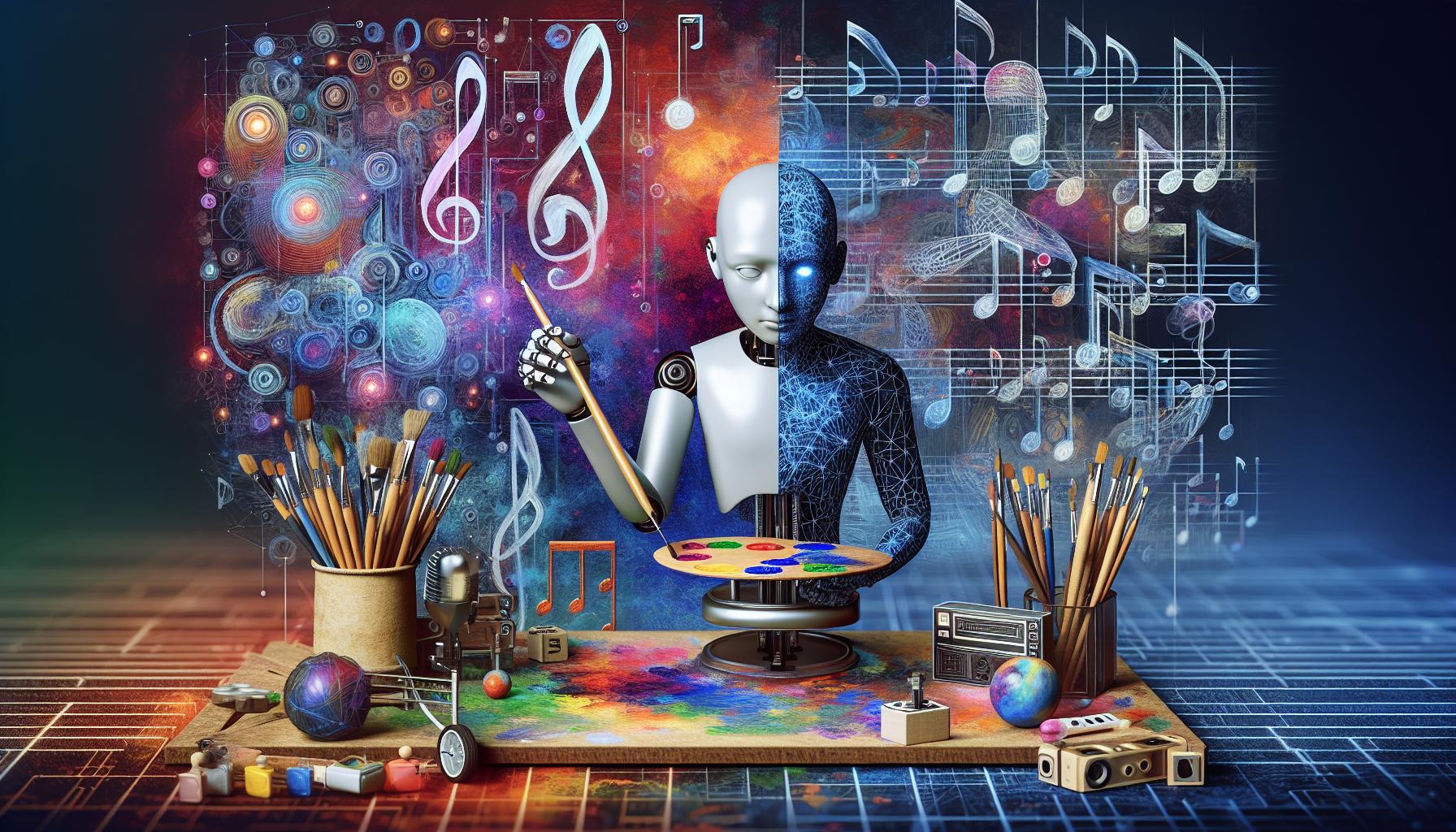AI and Creative Industries: Where Artificial Intelligence Is Blossoming in Art and Design

Introduction
The integration of Artificial Intelligence (AI) into the creative industries has ushered in a new era of innovation and expression across art, music, and design. This article explores the revolutionary impact of A.I. technologies in these fields, analyzing its creative applications and the ongoing debates about the essence of authenticity and creativity in AI-generated content.
The Rise of A.I. in Art
In the art world, A.I. has become a tool for both creating new forms of artwork and analyzing existing ones. Artists are employing machine learning algorithms to forge images that blur the boundaries between human and computer-generated artistry. Collaboration between A.I. and artists like Refik Anadol and Mario Klingemann highlight a trend where A.I. assists in complex data visualizations and creative interpretations of traditional aesthetics.
One pivotal aspect is the potential for A.I. to democratize art creation, making artistic expression accessible to a broader audience without traditional artistic skills. However, this prospect raises questions about the originality and emotional depth of AI-generated art, contrasting it with the nuanced expressions traditionally celebrated in human-created art.
Harmony through Code: A.I. in Music
AI's role in music stretches from composition to performance and analysis. Tools like AIVA and Amper Music leverage A.I. to compose music for film scores, games, and even pop music. These platforms analyze large datasets of music to identify patterns and styles, then generate compositions that offer emotional and thematic suitability to various scenarios.
While some view these innovations as a step towards a fully-automated creative process, others believe it could never replace the human touch in capturing the subtleties of emotion and narrative that music conveys. The debate continues as A.I. transforms what it means to be a composer in the modern era.
Designing the Future: A.I. in Architecture
Architecture has also substantially benefited from AI, particularly in the context of sustainable and efficient design. A.I. algorithms are used for simulating environmental impacts, optimizing building materials, and enhancing the functionality of spaces without compromising on style. Companies like Autodesk are pioneering these capabilities, driving forward the potential of AI-assisted architectural design.
Despite its utility, there are concerns regarding the loss of a 'personal touch' in designs that might become overly standardized or lack the human foresight experienced architects offer. Yet, proponents argue that A.I. empowers architects by refining drafts and predicting the viability of structural innovations.
Authenticity and Creativity Debates
The advent of A.I. in creative domains has not been without controversy. Critics argue that AI-generated works lack the 'soul' and authenticity of pieces created by human hands and minds. The discussion often centers on what constitutes creativity and whether an A.I. can possess it.
In contrast, supporters believe that A.I. opens up a realm of limitless possibilities where the combination of human and artificial creativity could lead to unexplored territories of artistic expression. They argue that the tool does not diminish the art but serves as a new medium that can be explored.
Conclusion
As A.I. continues to evolve, so too will its role in the creative industries. The journey of integrating A.I. into art, music, and design is just beginning, with enormous potential for these fields to both evolve and provoke thought around the fundamental elements that make them uniquely human.




